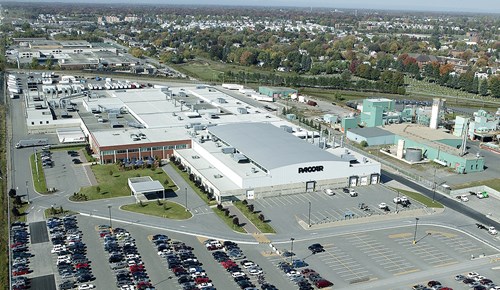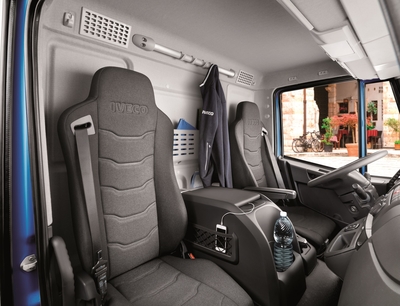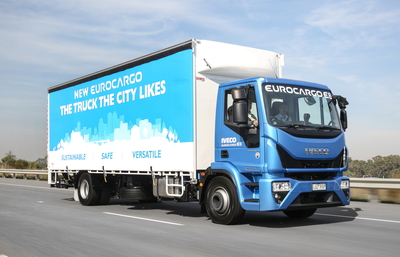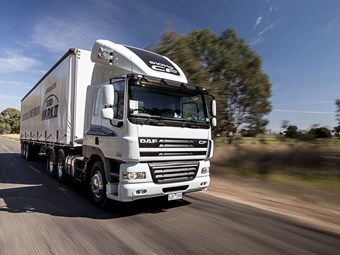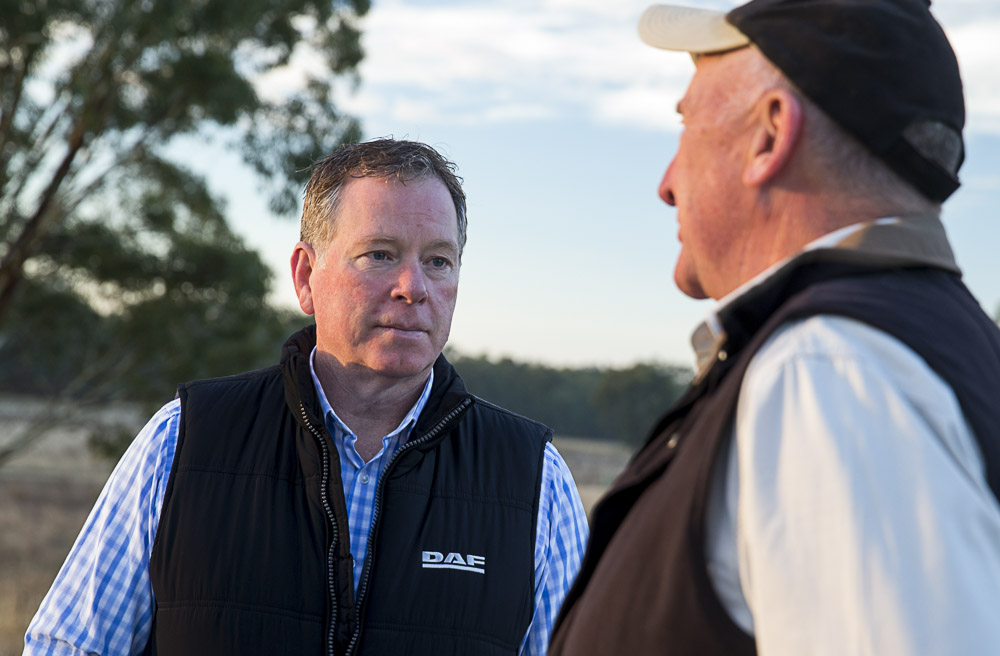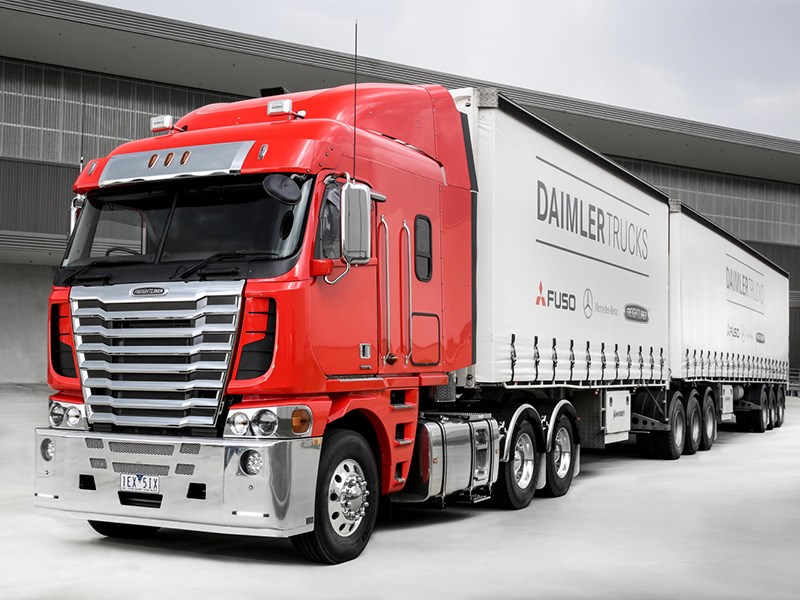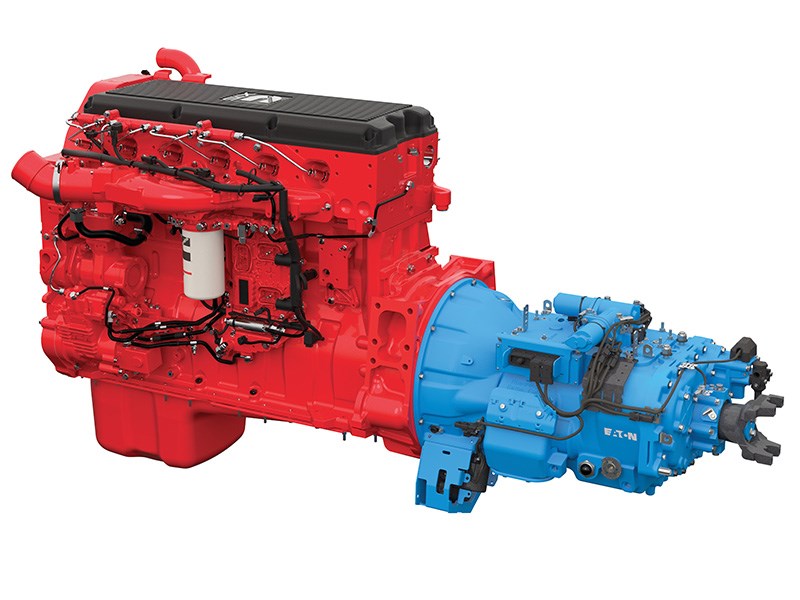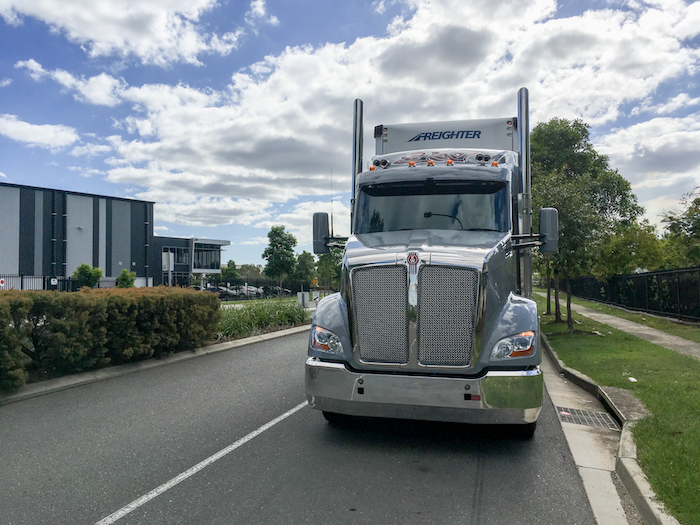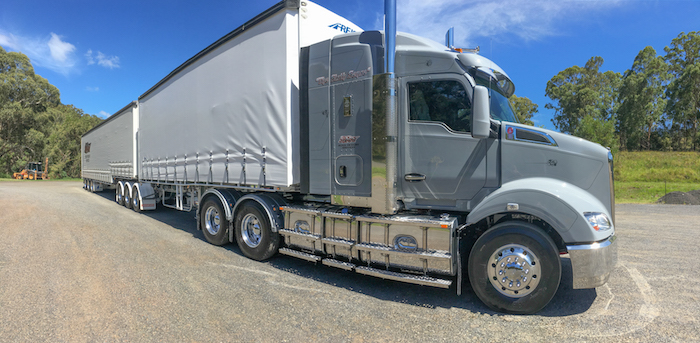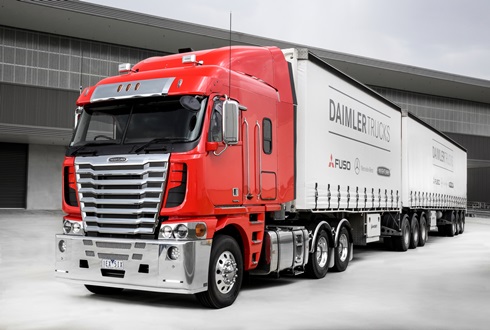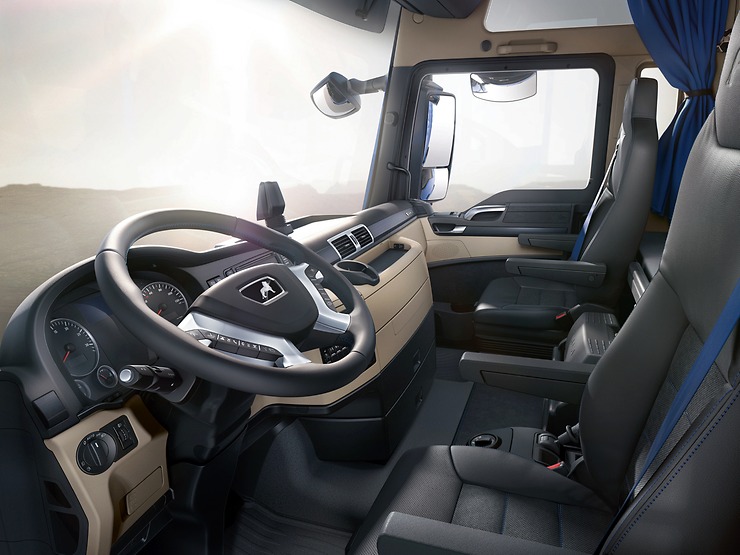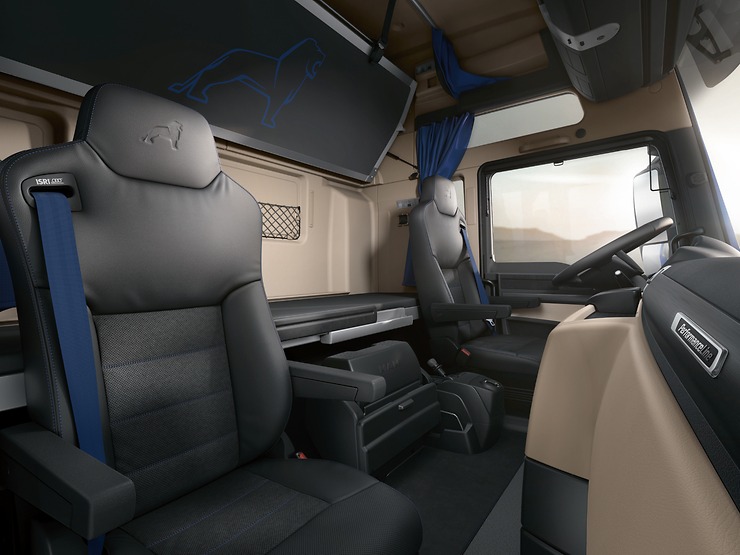
kscarbel2
Moderator-
Posts
18,888 -
Joined
-
Days Won
114
Content Type
Profiles
Forums
Gallery
Events
Blogs
BMT Wiki
Collections
Store
Everything posted by kscarbel2
-
Well said. In my experience, cultural change can only be orchestrated by the individual at the top of the pyramid. So many company's management don't grasp that.
-
Trump rules out swift NAFTA withdrawal in favor of renegotiation Bloomberg / April 26, 2017 President Donald Trump won’t immediately terminate U.S. participation in the North American Free Trade Agreement, the White House said, after he spoke with the leaders of Mexico and Canada about ways to renegotiate the accord. “Both conversations were pleasant and productive. President Trump agreed not to terminate NAFTA at this time and the leaders agreed to proceed swiftly, according to their required internal procedures, to enable the renegotiation of the NAFTA deal to the benefit of all three countries," the White House said Wednesday. Mexico’s peso and Canada’s dollar jumped after the White House’s announcement. Trump’s top advisers had been embroiled in a debate over how aggressively to proceed on reshaping U.S. participation in NAFTA, with hard-liners favoring a threatened withdrawal as soon as this week and others advocating for a more measured approach to reopening negotiations with Canada and Mexico. Some of Trump’s advisers wanted a dramatic move before Trump’s 100th day in office on Saturday to fulfill a key campaign promise, while others said he could let the milestone pass and revisit the issue later through more formal procedures, according to two White House officials who spoke on condition of anonymity to discuss internal deliberations. Dramatic step The dispute played out in the media Wednesday, with several outlets saying Trump would take the most dramatic available step -- issuing an order declaring his intention to withdraw from the treaty. In this case, threatening to withdraw would have amounted to a formal step that started the process of giving Mexico and Canada six months notice that Trump intended to start negotiating. Instead Trump is asking the two other nations to open talks on ways to make the deal more balanced from the U.S. perspective, which is allowed within the framework of the treaty. He spoke late Wednesday afternoon with his two counterparts, Canadian Prime Minister Justin Trudeau and Mexican President Enrique Pena Nieto, according to the White House. “It is my privilege to bring NAFTA up to date through renegotiation,” Trump said in the White House statement. “I believe that the end result will make all three countries stronger and better.” Exactly who in the White House sparred over the decision wasn’t known but one of the most prominent anti-trade hard-liners is Senior Counselor to the President Steve Bannon, and Trump’s decision is sure to be viewed as a defeat for Bannon and his views. Bannon already is seen as being on the outs with Trump over reportedly sparring with Trump’s son-in-law Jared Kushner. ‘Bring pressure’ Talk that Trump would revisit NAFTA on Wednesday had caused Mexico’s peso, the Canadian dollar and shares of companies that rely on cross-border trade to plunge. “Even if he notifies Mexico and the U.S. of his intentions, that doesn’t mean he has to leave,” said Beatriz Leycegui, who was Mexico’s deputy minister on foreign trade between 2006 and 2011. “This is a strategy to bring pressure on Canada and Mexico.” Trump must give Congress 90 days notice that he seeks to renegotiate the accord. Commerce Secretary Wilbur Ross said on Tuesday the administration is busy working with lawmakers to kick start renegotiation of the deal. He did say the U.S. was embarking on a more muscular strategy for trade-enforcement. Trump has blamed NAFTA for hollowing out America’s manufacturing sector by relocating jobs to lower-cost Mexico -- which his administration initially said was the main target of changes he was seeking to the accord. ‘Disastrously bad’ Where Trump stands on NAFTA is hard to discern. After harsh rhetoric during the campaign, he has in recent weeks toned down his criticism, suggesting the relationship with Canada only needs tweaking. But this week he fueled trade tensions by imposing new duties on softwood lumber imports from Canada and vowing to defend U.S. dairy farmers against quotas imposed in Canada. A number of Republicans are strong backers of free trade and have cautioned the administration against walking away from the free-trade deal. “Scrapping NAFTA would be a disastrously bad idea,” U.S. Sen. Ben Sasse, R-Neb., who was a Trump critic during the campaign, said Wednesday in a statement. “It would hurt American families at the check-out, and it would cripple American producers in the field and the office.” Sen. Jeff Flake, R-Ariz., also blasted the idea on Twitter, writing, “Increasing trade barriers with CAN and MEX will result in lost jobs and higher consumer costs in #AZ. Strengthen #NAFTA, don’t abandon it.” Without NAFTA -- which reduced or eliminated tariffs on most trade products after taking force in 1994 -- commerce ties between the nations would need to be reset, raising the specter of more frequent trade disputes and higher tariffs. U.S. trade with its NAFTA partners has more than tripled since the agreement took effect, rising to $1.1 trillion last year. Canada followed by Mexico ranked as the two biggest markets for U.S. exports, taking in a combined 34 percent of the total in 2016, according to a February paper published by the Congressional Research Service.
-
Ford profits fall on recall charges, higher costs Automotive News / April 27, 2017 Ford Motor Co. reported first-quarter net income of $1.6 billion, down $900 million from a year earlier, as revenue rose and profit margins shrank. Pretax earnings were $2.2 billion, down $1.6 billion, or 42 percent, from a year earlier, when Ford posted its best quarter in the company’s 114-year history. The automaker’s revenue rose 1.4 billion, or 4 percent, to $39.1 billion thanks to a strong sales mix. But profits were pinched by charges for recalls, continued investment in new mobility services and higher parts costs for some of its 2016 launches. Executives said the quarter will be the toughest in what’s expected to be a down year. The remainder of 2017 will be about even to, or even better than, its financial performance last year, where it made $10.4 billion pretax profit, second-best in the company’s history. Ford shares closed down 1.1 percent to $11.47. Ford’s profit margins during the quarter fell 4.4 percentage points to 5.4 percent. Ford reported earnings per share of 40 cents, down from the first quarter of last year but better than the 35 cents analysts had expected. “It was a solid quarter,” Ford CFO Bob Shanks told reporters. “There were no surprises; it’s consistent with what we had expected.” Ford took a $467 million warranty hit in the first quarter. That includes a $295 million charge for two recalls, one involving engines that could catch fire and the other involving door latches. CEO Mark Fields said the recall costs that have plagued Ford’s bottom line in recent years -- it also took a $600 million charge in the third quarter of 2016 -- are due to building more vehicles with similar underpinnings. “We were a little bit ahead of the industry in reducing our platforms and getting commonality of parts,” he said. “When we do have a recall, it tends to hit a bigger population. Whenever we see something, we’re going to act very proactively for the customer. That’s exactly what we’ll continue to do.” North America The automaker’s profits were driven by North America, where it made a $2 billion pre-tax profit, down $1.1 billion from a year earlier. Profit margins there fell 4.6 percentage points to 8.3 percent, and Ford’s market share fell 0.5 percentage points to 14.1 percent due to lower fleet sales. Ford’s retail share rose two-tenths of a percentage point, thanks to sales of trucks, utilities and luxury vehicles. Many of the factors affecting Ford’s overall business -- like part costs and investing in mobility -- are taking place in North America. The company expects the U.S. sales market will continue to plateau, although it is being helped by strong truck and SUV sales -- two areas where Ford is investing and updating its products, like the recently redesigned Super Duty and refreshed Escape. “We’re continuing our intense focus on costs,” Fields said. “We’re not only mindful of the current environment, but also preparing even more for a downturn scenario.” Ford expects it can break even in North America if the selling rate falls to 11 million. Regional performances Ford made a pre-tax profit of $176 million in Europe, down $258 million from last year, for its eighth-consecutive quarterly profit there. The automaker expects continued profits there as it offers more expensive trims on some of its popular sedans and utilities. It also made $124 million in Asia Pacific, despite a “tough quarter” for China, Shanks said. That was $96 million less than it made there at the same time last year. Ford lost $244 million in South America, although results improved by $12 million compared with last year. It lost $80 million in the Middle East and Africa, $66 million more than it lost there a year ago. Outlook Ford reaffirmed its full-year guidance. It expects to make a pre-tax profit of $9 billion, down from $10.4 billion in 2016 as it invests in “emerging opportunities” like autonomous and electric vehicles. It's in the midst of spending $4.5 billion through 2021 on 13 new electrified vehicles. Fields said that the company believes that in 15 years, there will be more electrified vehicles on the market than vehicles with internal combustion engines. It recently agreed to invest $1 billion in artificial intelligence startup Argo AI over five years. And, Ford is expanding Chariot, a Silicon Valley shuttle service it acquired last year. “This quarter was an investment in Ford’s future,” Fields said in a statement. Shanks said that the remainder of 2017 will be about even or better than Ford’s financial performance in 2016. “This will be the toughest quarter,” he said, although he noted that Ford’s lowest profits of the year will come in the third quarter, because of seasonal timing. Ford has forecast a profit for its Ford Credit arm of about $1.5 billion this year, down from $1.9 billion, because of lower auction values and a glut of off-lease cars. Ford Credit posted a pre-tax profit of $481 million for the first quarter, down $33 million from a year ago.
-
The Guardian / April 27, 2017 United Airlines will offer passengers up to $10,000 (£7,700) for giving up their seats on overbooked flights, as part of efforts to repair the damage to its reputation after widespread condemnation over the forcible removal of a passenger. The offer of increased compensation came after rival Delta outlined plans to offer up to $9,950 in such cases. United said it would “increase customer compensation incentives for voluntary denied boarding up to $10,000”, and also promised action to reduce overbooking and improve customer satisfaction. “Our goal is to reduce incidents of involuntary denial of boarding to as close to zero as possible and become a more customer-focused airline,” the carrier said. United also said it would no longer call police to stop passengers boarding, nor would passengers who were seated be required to give up their place on overbooked flights. Crews would be booked on flights 60 minutes before departure, and staff would undergo annual training to handle “the most difficult situations”, an inquiry report said. United will also adopt a “no questions asked” policy on permanently lost baggage from June, paying customers $1,500 for the value of the bag and its contents.
-
Kenworth Truck Co. Press Release / April 21, 2017 With more than 200,000 square-feet of exhibit space, and nearly 300 exhibitors, the Canadian trucking community is descending upon Montreal and the ExpoCam 2017 this week. While Kenworth’s medium and heavy duty trucks will be on display inside the Place Bonaventure, its medium duty line will also be traveling the streets of Montreal, a short drive from where they were produced. “Kenworth medium duty trucks are locally built with a lot of pride at PACCAR’s Ste. Therese factory,” said Mike Parent, general manager of Kenworth Montreal, which has sent a T370 dump to join a T680 76-inch sleeper, T880 dump and W900L in Kenworth’s ExpoCam booth (#4239). “We hold customer events at the factory and showcase the amount of care and quality built into every Kenworth medium duty conventional. A quality-designed and built truck is our competitive advantage, and a factory tour reinforces that message.” According to Chakib Toubal-Seghir, Ste. Therese’s plant manager, more than 167,000 medium duty trucks have been built at the factory since 1999, and innovations and quality improvements continue to be made. “We never stop advancing our processes,” he said. “We have a dedicated workforce, augmented with the precision of robotics. Last year, we had more than 1,110 visitors and customers visit our factory. Our employees are always very proud to work in front of customers, to showcase the level of expertise and care that goes into the build of the trucks.” For William Pasquini, sales and purchase manager at Discount Car and Truck Rentals, the factory tour he took when his five T370s were being built was eye-opening. “I was so impressed,” he said. “The first thing you notice is the cleanliness – you just don’t expect a pristine environment within a manufacturing facility. Everything was so organized up and down the line, with assemblers checking their work to ensure quality. I was also impressed with some of the machinery – one piece would lift and flip the entire chassis to optimize ergonomics for workers. The paint bay, with all the robotics and environmental safeguards, was revolutionary in my opinion.” According to Pasquini, at the end of the tour, he even got to do the Dyno test on his own truck. “That really concluded a great day at the factory,” he said. “It was very special to see our own trucks being built, then actually running the engine on the Dyno for final inspection.” When Discount Car and Truck Rentals’ first truck was delivered, Pasquini said they did a special promotion to announce the trucks to its customers. “It showcased how we were a Quebec company, with a Quebec-built Kenworth and a Quebec body. It was our local pride showing.” Pasquini said the Kenworth T370s have been a big hit with customers. “So much that we have another eight on order,” he said. “When we started offering the T370 for short term rentals, the response was tremendous. It’s our high-end truck and demand continues to grow – it’s why we’re adding more to our fleet.” .
-
Kenworth Truck Co. Press Release / April 25, 2017 It’s been shown that up to 80 percent of every service event consists of poor or slow communications and processes — lost time, effort and assets that could be better utilized moving your business ahead. Introducing Kenworth TruckTech+ Remote Diagnostics and Service Management, a revolutionary, fully integrated system designed to streamline every aspect of fleet maintenance. .
-
Navistar reveals new Class 8 regional haul tractor
kscarbel2 replied to kscarbel2's topic in Trucking News
Bullseye. An American truckmaker impresses. -
Navistar reveals new Class 8 regional haul tractor
kscarbel2 replied to kscarbel2's topic in Trucking News
-
Earnings Watch: Daimler, Volvo, Paccar Profits All Move Higher
kscarbel2 replied to kscarbel2's topic in Trucking News
Earnings Watch: Daimler Doubles First Quarter Profit Heavy Duty Trucking / April 26, 2017 Earnings for German truck and auto maker Daimler AG doubled in the first quarter of the year, despite lower sales of its trucks. Net income for the parent of Freightliner, Western Star and Mercedes-Benz totaled 2.70 billion euros ($2.96 billion) from 1.35 billion euros the same time a year ago, according to MarketWatch. That performance was driven by sharply higher Mercedes-Benz sales of SUVs and E-class models. At Daimler Financial Services, earnings grew significantly mainly as a result of increased contract volume, according to the company. Revenue rose 11% to 38.8 billion euros as unit sales rose 10% to 754,259 cars, trucks, vans and buses. This followed the company unexpectedly reporting on Tuesday that earnings before interest and taxes (EBIT) jumped 87.1% in the first quarter from a year earlier, totaling $4.01 billion euros, or $4.25 billion. In the first quarter of this year, sales by Daimler Trucks of 94,000 vehicles were 11% lower than in the prior-year period. Unit sales increased compared with the prior-year period in Europe by 12%. However, in North America, sales dropped significantly to 32,900 units compared to 40,400 a year earlier. In Latin America, Daimler Trucks increased its sales marginally to 6,300 while sales in Brazil decreased 15% to 2,400 units due to the country’s difficult economic situation. But there was strong growth in unit sales in Argentina, up 114%. In Asia, sales were lower than in the prior-year quarter as unit sales decreased in the Middle East by 30%. The division’s revenue amounted to 7.9 billion euros, down from 8.2 billion euros a year earlier while EBIT of 668 million euros was higher than the prior-year figure of 516 million euros. Daimler expects a continuation of the cyclical market slow-down when it comes to demand for trucks in North America. “An overall decrease in the magnitude of 5% is to be expected in classes 6-8, and an even more substantial weakening of demand is anticipated in the segment of heavy-duty trucks (Class 8),” the company said. “Nonetheless, it is assumed that the market will gradually stabilize as the year progresses.” Overall, Daimler Trucks said it assumes that its total unit sales in 2017 will be in the magnitude of the previous year, including when it comes to unit sales in North America. -
Heavy Duty Trucking / April 25, 2017 Earnings for truck makers moved higher in the first quarter of the year, with three on Tuesday showing big improvements from the same time in 2016. Volvo AB's first quarter profit increased 25% from a year earlier, totaling 4.73 billion Swedish kronor, or $533.7 million, according to MarketWatch, beating analysts' expectations of 3.56 billion kronor. Sales during the period rose 8% to 77.37 billion kronor, compared with 71.71 kronor billion a year earlier The better numbers were driven by increased orders of both trucks and construction equipment. “After the downwards correction in the long haulage segment in 2016, the North American [truck] market seems to be bottoming out. We see positive signs of increased order activity,” said Martin Lundstedt, president and CEO. He noted that the truck market in Europe remained strong in the first quarter of the year and demand there for heavy duty trucks is expected to be about the same as it was in 2016. In North America, Lundstedt said dealer inventories of new trucks are at healthy levels, however inventories for used long-haul trucks remain elevated. “This continues to dampen demand for new trucks in this segment despite indications of an improving freight environment. Demand in the refuse and construction segments remains good. Retail sales for the industry are forecasted to be lower 2017 compared to 2016,” he said. North American truck deliveries were down 34% compared to a strong first quarter 2016. Both Volvo Trucks and Mack gained market shares, with Volvo Trucks reaching 9.4% and Mack hitting 8.9%. The order intake increase of 27% was driven by both Volvo Trucks and Mack reflecting higher activity within the construction segment and a somewhat improved freight environment combined with low dealer inventories, according to Volvo Paccar Earnings Rebound Back in the U.S., the parent to Peterbilt and Kenworth reported a big turnaround. Paccar Inc. had net income of $310.3 million compared to a net loss of $594.6 million a year earlier. The performance a year earlier was due to more than $900 million the company had to pay over claims of price fixing in Europe that involved it and other truck manufacturers. Earnings per share in the first quarter of 2017 were 88 cents, 1 cent better than Wall Street expectations. Despite this turnaround, revenue declined 1.7% to $3.94 billion. “Paccar benefited from increasing truck production in North America and Europe, as well as record quarterly Paccar Parts pretax profits,” said Ron Armstrong, CEO. U.S. and Canada Class 8 truck industry orders were 40% higher in the first quarter of 2017 compared to the same period last year, according to Darrin Siver, Paccar senior vice president, who said this reflects a good economy and steady freight demand. “Peterbilt and Kenworth achieved 32% share of U.S. and Canada Class 8 truck industry orders in the first quarter this year,” he said. “Class 8 truck industry retail sales for the U.S. and Canada in 2017 are expected to be in a range of 190,000 to 220,000 vehicles.” Paccar Parts achieved record quarterly pretax income of $151.7 million in the first quarter of 2017, which was 13% higher than the $134.6 million earned in the same period last year. It generated revenues of $786.7 million in the first quarter of 2017, 9% higher than the $719.5 million reported in the same period last year. Daimler Pre-Tax Profit Nearly Doubles Not to be outdone, the parent company to the Freightliner, Western Star and Mercedes-Benz brands reported preliminary numbers Tuesday, a day before it publishes full first quarter numbers. Daimler AG earnings before interest and taxes (EBIT) jumped 87.1% in the first quarter from a year earlier, totaling $4.01 billion euros, or $4.25 billion, according to Reuters, due to better car sales and one-time gains. The German company said that EBIT for Mercedes-Benz cars totaled 2.234 billion euros, up from 1.395 billion a year earlier. Daimler Truck EBIT was 668 million euros compared to 516 million euros in the first quarter of 2016. According to the Financial Times, Daimler was forced to publish strong first-quarter results two weeks early because they were “significantly above market expectations."
-
Trailer/Body Builders / April 26, 2017 In March, EU commercial vehicle registrations increased 10%, totaling 266,902 units, according to the European Automobile Manufacturers' Association (ACEA). This strong result is mainly due to Easter falling in March last year and in April this year. Demand was sustained by all segments and across most of the major EU markets. Spain (+24.3%), Germany (+17.3%), Italy (+17.0%) and France (+13.7%) all posted double-digit percentage gains, although registrations declined slightly in the United Kingdom (-1.3%). During the first quarter of the year, the European market expanded by 7.5%, counting 606,230 new commercial vehicles. Over the same period, both Spain (+20.4%) and Italy (+13.4%) posted highest increases, followed by France (+9.4%) and Germany (+7.5%), while the UK market remained stable (-0.2%). New heavy commercial vehicles (HCV) over 16 tonnes March 2017 results show a positive uplift in the heavy truck segment (+6.1%), with 29,971 new vehicles registered. Most of the Eu’s major markets contributed to this growth, Italy did very well (+60.1%) while the UK (-11.7%) market faced a downturn. Three months into the year, the EU market grew by 4.8%, reaching 75,331 units. Italy (+43.9%), France (+5.7%), Germany (+4.9%), Spain (+2.0) and the UK (+0.6%) all saw their demand for heavy trucks increase. New medium and heavy commercial vehicles (MHCV) over 3.5 tonnes In March 2017, truck registrations were largely similar to those in the heavy truck segment, with Italy again posting the highest growth figures (+52.9%) followed by Spain (+16.9%) and Germany (+14.1%) – only the United Kingdom posted a decline (-6.4%). Overall, 36,870 new trucks were registered in the EU, up 7.1% compared to March 2016. From January to March 2017, 91,665 new trucks were registered in the European Union, 4.7% more than last year. Similarly to the HCV segment, the five big markets posted growth, jointly sustaining positive momentum across the whole region. New medium and heavy buses & coaches (MHBC) over 3.5 tonnes March 2017 results of the bus and coach segment were rather diverse. Demand fell in France (‐8.6%), while Italy (+57.8%) and Germany (+21.6%) posted remarkable growth. Overall, 4,199 new buses and coaches were registered across the region, up 9.1%. In the first quarter of 2017, the EU bus and coach market grew by 5.9%, counting 9,716 vehicles registered. Demand only decreased in Spain (-1.8%) and France (-17.9%), while new bus and coach registrations increased in Italy (+58.0%), Germany (+12.9%) and the UK (+8.5%). New light commercial vehicles (LCV) up to 3.5 tonnes In March 2017, new registrations of light commercial vehicles totaled 225,833 units, or 10.5% more than in the same month last year. Spain (+25.4%), Germany (+18.4%), France (+15.2%) and Italy (+12.9%) all posted significant growth. At the same time, the United Kingdom (-0.9%) performed slightly below March 2016 levels. From January to March 2017, 504,849 new vans were registered in the EU, up 8.1% compared to the first quarter of 2016. The United Kingdom (-0.9%) was the only major market posting a slight decline, while Spain (+23.6%), France (+10.2%), Italy (+9.4%) and Germany (+8.9%) all saw demand for vans increase.
-
Daimler First Quarter Operating Profit Rises 86.6%
kscarbel2 replied to kscarbel2's topic in Trucking News
Daimler's First-Quarter Profits Double, but Trucks Not a Big Factor Transport Topics / April 26, 2017 First-quarter business rose and profits doubled for German manufacturer Daimler AG, but new truck sales were generally not part of the equation, and especially not in North America, the company reported April 26. Quarterly operating profit jumped at least 19%, year-over-year, at all five major divisions and there were also some one-time benefits for the parent company of Freightliner and Western Star Trucks and Detroit Diesel Corp. As a whole, Daimler earned the equivalent of $2.98 billion, or $2.70 a share, on quarterly global sales of $41.31 billion. Net income was $1.55 billion, or $1.39, on revenue of $36.68 billion during the first three months of 2016. The truck division, Daimler’s second-largest behind Mercedes-Benz cars, earned the equivalent of $711.7 million in operating profit, up from $569.6 million, even though quarterly revenue declined by 3% to $8.46 billion and unit sales fell 11% to 94,007 commercial vehicles. Truck-making was the only division not to post a gain in revenue, even though profits rose. The company said truck profits rose primarily due to a gain from a real estate sale in Japan during the quarter just ended. The company also said it benefited from efficiency gains at the truck division, as operating margin improved to 8.4% from 6.3% in the year-ago quarter. Mercedes-Benz led the Daimler growth with a 14% surge in quarterly revenue and a 60% leap in operating profit. In assessing the coming months and demand for trucks in North America, “We expect a continuation of the cyclical market slow down in the full year [2017]. An overall decrease in the magnitude of 5% is to be expected in Classes 6-8, and we anticipate and even more substantial weakening of demand in the segment of heavy-duty trucks. “Nonetheless, we assume that the market will gradually stabilize as the year progresses,” the report said. The company is more bullish on the world and U.S. economies. “The outlook for the world economy continues to be favorable at the beginning of the second quarter of 2017, so global growth could accelerate slightly this year. Recent forecasts for full-year 2017 are at the upper end of a range from 2.5% to 3%,” he report said. Switching to the United States, management said, “Compared to its weak performance in 2016 with growth of just 1.6%, the U.S. economy should revive significantly and grow by approximately 2.3%,” featuring stable private consumption and increased corporate investment. -
What's atrocious about the swing-out step Billy? It works great for me. .
-
Iveco Trucks Australia Press Release / April 20, 2017 Iveco’s International Truck of the Year-winning Euro6 Eurocargo is now available in Australia, providing operators with a host of new safety and efficiency features rarely seen before in medium duty trucks. The models come in a variety of specification choices ranging from 12 to 18t GVM in 4x2 configuration and with ‘Day’, ‘Sleeper’ (with high roof option) and ‘Crew Cab’ variants, ensuring there’ll likely be a Eurocargo to suite a broad range of applications. Previous Eurocargo models have enjoyed a reputation for striking an excellent balance between power output and fuel efficiency, and the latest trucks take this combination to the next level. Efficient new ‘Tector 7’ engine Powering the range is Iveco’s new 6-cylinder, 6.7 litre ‘Tector 7’ engine. This advanced diesel power plant features high pressure, common rail, electronic injection, turbocharging and 24 valves. Available in two power ratings, the Tector 7 develops 250 hp (185 kW) and 627 lb/ft (850 Nm) in ML120 models, and 280 hp (206 kW) and 738 lb/ft (1,000 Nm) in ML 160 and ML180 models – all figures come at low rpm for improved response added fuel efficiency. To meet stringent Euro6 emissions standards (well before mandated in Australia), models use Iveco’s innovative new ‘HI-SCR’ system, a single after-treatment system featuring passive DPF (Diesel Particulate Filter). Coupled to the engines are a choice of either a manual ZF 9-speed overdrive transmission with dash-mounted gear shift or the Allison S3000, 5-speed full automatic which provides a more relaxed drive particularly in congested metropolitan conditions. Safety stakes raised The E6 Eurocargo raises the safety benchmark in the medium duty truck market with a range of innovative safety features not normally seen in this segment, especially amongst its Japanese competitors. All new Eurocargo variants feature the superior stopping power of front and rear disc brakes with ABS. New models also benefit from Anti-Slip Regulator (ASR), Electronic Stability Program (ESP) and Advanced Emergency Braking System (AEBS). The new Eurocargo can be specified with Adaptive Cruise Control (ACC) and a Lane Departure Warning System (LDWS) that warns the driver if the vehicle is moving from its lane. Rounding out the safety appointments is a Hill Holder function, Driver’s SRS airbag and Daytime Running Lamps (DRLs). Comfortable cabin Drivers can spend many hours behind the wheel each day so it’s important that a modern truck cabin is designed with ergonomics and comfort in mind to minimise fatigue. Cabin entry and egress in the new range is easy courtesy of generous steps and 90°-opening front doors. Once inside, the driver is treated to a fully adjustable ISRI seat and redesigned interior with all controls being placed initiatively within arm’s reach. A linear dashboard design (featuring electronic anti-glare instrument panel) and the compact dimensions of the engine tunnel, allow the driver to easily move around the cabin and leave the vehicle from either side in preparation for loading and unloading their goods. Iveco has also included a number of functional features in the cabin, allowing operators to more easily keep up with paperwork and other job requirements. The centre console has a 20 litre space (available with single passenger seat) that can comfortably accommodate a laptop, tablet and the like. It also features a reading light and is equipped with side storage pockets and two USB connectors for charging electronic devices. A practical workspace can also be created by opening out the upper area of the console. Other cabin appointments include a driver’s side console housing two bottle holders, a 12V power socket and option for a compressed air pocket. Additionally, there are more storage spaces throughout the cabin and a hanging rail with hooks on the rear wall of the cabin for items such as personal protection equipment and other apparel. For fleets wanting to run telematics, the new Eurocargo features the necessary hardware for easy integration of third party systems, allowing operators the versatility to choose the system best suited to their requirements. The Eurocargo models ride on a combination of front parabolic spring suspension with rear 2-Airbag Electronically-controlled Air Suspension (ECAS) for the ML120 and front parabolic spring suspension with rear 4-Airbag ECAS for ML160 and ML180 models. For superior handling, front stabiliser bars are standard on all models. The E6 Eurocargo will be sold alongside the earlier E5 models, providing operators with an even broader Eurocargo model choice. These earlier E5 vehicles (including 4x4) will also undergo enhancements in the coming months when they adopt their E6 sibling’s new exterior cabin appearance and many of the new model’s interior cabin appointments. Comments from Iveco ANZ Product Manager, Marco Quaranta Mr Quaranta said the new E6 Eurocargo is an important vehicle, not only for Iveco but for the broader industry. “Medium duty trucks are often seen as the ‘workhorses’ of urban and short haul intra-city delivery, and as such, they can be quite basic and Spartan in terms of specification levels with buyers often forgoing comfort and safety equipment,” Mr Quaranta said. “Gradually customer requirements are changing, being driven by a desire to not only have a truck that does the job, but one that does so more comfortably and more safely for the driver, while returning greater efficiency to the operator through reduced fuel consumption and lower whole of life costings. “The new E6 Eurocargo recognises that all operators are deserving of the latest vehicle technologies – these shouldn’t be reserved for those who operate a top-of-the-line European prime mover. “With clear back of cab options and up to 14 pallets of payload (day cab), Iveco is targeting customer across a range of applications from general freight and refrigerated, to tilt tray and crane truck work. “The Eurocargo is one of the best-selling medium duty trucks in Europe and growing in acceptance locally amongst operators who prefer higher safety, performance, comfort and sophistication levels - the latest release takes all of these benefits to new heights.” .
-
Brighter days for DAF in Australia Trade Trucks AU / April 25, 2017 Paccar is officially launching its new DAF 510hp CF85 model at the 2017 Brisbane Truck Show The anticipated introduction of a 510 horsepower version of DAF’s versatile CF85 model has the potential to create an entirely new era for the brand, according to DAF Trucks Australia general manager, Rob Griffin. The 510hp CF85 will be officially launched at the upcoming Brisbane Truck Show. DAF’s sales figures for the first quarter of 2017 were notably improved over previous years and the imminent introduction of the uprated CF85 is expected to provide significant impetus to plans for substantial growth of Paccar’s continental cab-over. Yet despite its established position as one of Europe’s most powerful players and arguably Paccar’s greatest success story, Rob Griffin concedes DAF has long struggled for recognition on the Australian market. Formerly national sales manager at Kenworth, he says there are many factors behind DAF’s modest acceptance by Australian truck operators, including a reputation forged long before Kenworth and Peterbilt parent Paccar took control of the Dutch truck and engine maker. "No doubt about it, the brand got off to an ordinary start in this country," he says, recalling pre-Paccar days when DAF’s Dutch principals largely took the Australian market for granted. "They were putting the truck into applications that just weren’t right for it, and they brought it here without any real testing, obviously thinking it could do anything other trucks were doing. "It wasn’t a bad truck," Rob Griffin insists. "In most cases it was just badly applied." DAF first came to Australia in 1984 when the brand was still a Dutch company. After a poor experience, the Dutch ultimately took their truck home. Then in 1996 Paccar paid US$540 million for the beleaguered brand and followed that in 1998 by taking control of Leyland operations in the UK where all right-hand-drive DAF trucks are now made. Despite the sceptics – and there were plenty of them – the acquisitions were an inspired move by Paccar. Applying its renowned management skills and economic acumen, Paccar turned the otherwise defeated DAF into a European powerhouse where it is today market leader in a number of countries including the highly competitive UK market. Last year alone DAF registered almost 47,000 trucks in Europe. Critically, it’s also a brand with a solid reputation for fuel efficiency from its own MX11 and MX13 engines, endorsing again the long-term reasoning behind Paccar’s decision to buy a truck brand that made its own engines. At the end of last year there were more than 135,000 MX engines powering Kenworth and Peterbilt models across the length and breadth of North America. Declaring a firm faith in DAF’s prospects for a stronger place on the Australian market, Rob Griffin asserts that much of the brand’s reputation and sales mediocrity in this country are based on aged perceptions rather than modern realities. "We’ve done a lot of work behind the scenes and the way DAF was in the past, belongs to the past," he comments. As for the suggestion that DAF in this country is often viewed as a poor cousin to big brother Kenworth, Rob doesn’t mince his words. "That’s how some others may see it, but they’re wrong. "We take the Kenworth association as a bonus. We’re setting up this business to complement what Kenworth brings to the market, not to take anything away from either brand. "The simple truth is that there are some applications best suited to a European cab-over and that’s where we’re aiming with DAF. "In fact, when you bring something new into the product range like this CF85 with an MX13 engine at 510hp, it creates an entirely new focus for the brand and opens us up to sections of the market we haven’t had before. "It will be enormous for us," he contends, "particularly with fleets. Price-wise it will be very competitive." Rob says the new model will be a spearhead in DAF’s re-emergence. "The 510 horsepower CF is a really important truck to our growth," he emphasises. "As it stands at the moment, the CF at its 460 horsepower rating is DAF’s best seller but for local and regional B-doubles, the industry has a psyche around 500 horsepower and that’s where the 510 rating under the CF cab opens up new market segments to DAF." However, the 510hp CF85 will not be aimed at linehaul work, Rob remarks. "The CF 510 is our suburban and intrastate model for either single trailers or B-doubles up to 70 tonnes. "We’ve specced it that way," he continues, "with a 16-speed automated (ZF AS-Tronic) transmission for the flexibility to flow with suburban traffic and provide the right balance between performance and fuel." The 510hp CF85 will be offered in 4x2, 6x4 and 8x4 configurations, and a confident Rob Griffin cites fuel economy, tare weight, cab entry and exit, vision and manoeuvrability as inherent assets of the model. "This truck will definitely surprise people but it’ll be critical to get people into it, to drive it and assess the truck on merit rather than mindset," he emphasises. "We have very few problems with our trucks in the field and we’re in no doubt the product is the best it has ever been. "We have all the right systems and packages in place so now we just have to keep getting people behind the wheel. "The truck will do the rest," a confident Rob Griffin concludes. .
-
New Cummins X15 available for Freightliner Argosy Trade Trucks AU / April 21, 2017 It is available in output ratings ranging from 485hp to 600hp and up to 2050lb-ft The new Cummins X15 engine is now available with Freightliner Argosy models. It is available in output ratings ranging from 485hp to 600hp and up to 2050lb-ft. An upgrade of the 15-litre ISXe5, the new X15 features Advanced Dynamic Efficient Powertrain Technology (ADEPT) – a suite of advanced electronic features capable of delivering fuel economy through improved powertrain integration. Tested in Australia since last year, ADEPT is for use with Eaton’s 18-speed automated UltraShift Plus transmission. It uses load, speed and grade-sensing technology to initiate adjustments to engine power, torque and transmission gear selection to take advantage of vehicle momentum for better fuel economy. The ADEPT package includes two features: SmartCoast – operates when the vehicle is on a moderate downhill grade by disengaging the front box of the transmission and returning the engine to idle to reduce drag, maintain momentum, and ultimately improve fuel economy. Once the engine commands the transmission to be put back in gear, the appropriate gear is engaged. SmartTorque – uses torque management intelligence to help eliminate unnecessary downshifts and keep the engine operating in the most fuel efficient ‘sweet spot’. Torque is varied across all gears depending on torque requirement. The release is timed with the availability of Cummins Connected Diagnostics – a telematics system that automatically processes fault code data, sending instant notifications from Cummins detailing probable root cause and providing recommended actions. There are plans to add Over-the-Air (OTA) engine programming and customisation to the engine in the near future to allow reprogramming or recalibration of the engine without having to take the truck to a service station. The new X15 engine is also available with the Detroit DD15. Freightliner says it is the only truck manufacturer to offer customers a choice of 15-litre engines for a heavy hauling B-double truck. .
-
Kenworth Balancing Act Diesel News AU / April 20, 2017 Moving with the times while keeping its traditional enthusiasts has created a Kenworth balancing act, where it retains a pragmatic quality. The brochure for the new trucks from Kenworth, the T610 and T610 SAR are headlined, ‘Our Best Truck Yet’ in its brochures. Of course, this can be dismissed as just a load of hype from the marketing department, but it is not like the Paccar organisation to go over the top on these occasions. Kenworth does have a lot to crow about, it is the dominant player in the Australian heavy duty market, and has been for some time. It is also coming under pressure from a couple of directions, the European cabover trucks are making inroads into heavy duty prime mover market and the older designs for conventional trucks are getting into dimensional strife in some applications. Often in Diesel News we talk about the debate between cabover and conventional and European vs US, but there are a large number of issues making truck buying choices trickier each year. However, the first question anyone considering these new trucks asks may not be about the exact dimensions, ratings and design. They are more likely to be more about whether these new trucks really do look and feel like a Kenworth, and carry on the long tradition so proudly developed by the Bayswater-based truck maker. Yes, they understand the compromises which have to be made by a boutique, in global terms, truck manufacturer. The days of individual trucks hand crafted for each individual have passed, now it’s all about streamlined tailored production of a truck capable of doing the job in the harsh Australian trucking environment. It is here where Kenworth has to do a tricky balancing act. The truck has to meet a number of conflicting expectations. There has always been a kind of ruggedness to a big KW, but the driver always notices the quality of the finish. The door closes precisely every time for ten years, cables don’t rub when running on farm tracks and those annoying little rattles in the cab are rare. This is the perception the company has been building up throughout its history. This brings us back to the question. Does it look and feel like a ‘proper’ Kenworth? The answer is, of course, yes. The compromises made in the design to bring the conventional Kenworth up to 21st century standard do not compromise those little cues which tell the driver they are in a KW. .
-
Prime Mover Magazine / April 24, 2017 Freightliner has increased the engine options for its Argosy prime mover by offering the new Cummins X15 engine in addition to the Detroit DD15. According to Freightliner, it is the only truck manufacturer to offer customers a choice of 15-litre engines for a B-double truck. The new X15 engine fitted to the Argosy is available in output ratings ranging from 485hp to 600hp and up to 2050lb-ft. “We are excited to be able to offer the new Cummins X15 to our loyal Argosy customers in addition to the proven Detroit DD15,” said Freightliner Director, Stephen Downes. “Freightliner is the only brand that can give customers at the heavy end of the market the opportunity to choose the big bore engine solution that best suits their application." The Cummins X15 is a development of the 15-litre ISXe5, which features Advanced Dynamic Efficient Powertrain Technology (ADEPT) – a suite of advanced electronic features the company says is capable of delivering fuel economy gains through improved powertrain integration. Freightliner says the ADEPT suite is for use with Eaton’s 18-speed automated UltraShift Plus transmission and has been tested in Australia since early 2016. The ADEPT package's SmartCoast feature operates when the vehicle is on a moderate downhill grade by disengaging the front box of the transmission and returning the engine to idle to reduce drag, maintain momentum, and ultimately improve fuel economy. Once the engine commands the transmission to be put back in gear, the appropriate gear is engaged. Meanwhile, its SmartTorque feature uses torque management intelligence to help eliminate unnecessary downshifts and keep the engine operating in the most fuel efficient ‘sweet spot’. Torque is varied across all gears depending on torque requirement. .
-
Volvo Group First-Quarter Earnings, Sales Rise
kscarbel2 replied to kscarbel2's topic in Trucking News
Unstable numbers from Volvo Göteborgs-Posten / April 25, 2017 Economics, it goes awry for AB Volvo. Now the pace is turned up in the factories in Tuve, as well as Vara and Skövde. "Now we can be happy for a few days - then we have to concentrate on getting even better. Competition is tough”, says CEO Martin Lundstedt. AB Volvo reported a pre-tax profit of SEK 6.4 billion for the first quarter of the year. A substantial increase compared to the profit of 5.3 billion kronor in the same period last year. As a result, the truck manufacturer also hit the expectations of the collective analysts - on average, they had a profit of approximately SEK 5 billion, according to Reuters compilation. The stock market was impressed and Volvo's B shares rushed around seven percent on Tuesday morning. "We have had a strong quarter, both in terms of profit and sales. The report shows many good examples of what we want to achieve in the organization - service sales increase, it is stronger for construction machinery and the truck market is also going strong. There is much to be enjoyed, but there is also much more we can do with the organization, "said Martin Lundstedt, President and CEO of Volvo. Five-fold profit for Volvo CE The biggest surprise is Volvo CE. The segment, which manufactures construction machinery, has long been hard pressed, seen as a problem child, and surrounded by stubborn sales sprawling. Sales now increase by 30 percent while it adjusted operating profit almost fivefold - to 1.6 billion from SEK 341 million in the same period last year. "We are in the midst of implementing a major improvement plan for Volvo CE - it brings results now. For example, internal efficiency and service sales have increased. At the same time, the market situation has improved in both Europe and Asia and also Africa and Oceania, "said Martin Lundstedt. Truck sales increased by more modest three percent during the period. The trend is the same as in the last year - sales in Europe are increasing while deliveries in North America are shrinking. Now, however, development can be broken. In the last three months, order intake in North America has increased by 27 percent. Martin Lundstedt, however, is cautiously optimistic. Europe backs "It is important to remember that we are now comparing with previous weak quarters. Even though order intake is increasing and inventory levels appear more normal for both new and used trucks, deliveries in North America decreased by 34 percent during the quarter. But the market has probably bottomed down now, he says. However, in the European market, to which the Tuve factory delivers, orders received decreased by one percent in total. Demand for heavy and medium-heavy trucks continues to be strong, while order bookings for light trucks fall by 37 percent. Volvo explains that many European customers "pre-purchased" light trucks in the first quarter of last year before the EU introduced new, stricter emission regulations. The truck manufacturer, however, retains its previous forecasts for both the European market and North America - while increasing for China. Now it is expected that a total of 765,000 heavy trucks will be sold in China during the year - 110,000 more than Volvo previously believed. The threat - political concern Overall, it is now better for all Volvo's operations. The Group sells both more buses and boat engines while increasing profitability for the four different business areas significantly. The factories are under pressure and production, and the number of employees, has increased in both the Tuve factory and the engine plants in Vara and Skövde. As the GP told us earlier this week, Volvo will also employ 500 new engineers. What threatens the positive trend? Martin Lundstedt points out the increased political unrest in the world, like a worrying cloud. "There is a greater measure of insecurity today, including in the relationship between different continents. We are affected by how the economy is developing globally and of possible threats to, for example, free trade. Therefore, we must maintain flexibility in the organization and ensure that we have country organizations that can handle development, he says. -
Volvo Trucks Press Release / April 21, 2017 Arclid Transport believes that the key to a successful business is getting the best out of both its drivers and its trucks. By investing in Volvo Trucks’ lightweight pusher axle, combined with driver training, fleet manager Peter Conway successfully achieved his goal of maximizing payload and increasing productivity. .
-
Scania Financial Services - customer testimonials
kscarbel2 replied to kscarbel2's topic in Trucking News
-
MAN Trucknology Days 2017: Connected Performance
kscarbel2 replied to kscarbel2's topic in Trucking News
-
The 640hp MAN TGX - First PerformanceLine edition goes to BFS
kscarbel2 replied to kscarbel2's topic in Trucking News
First MAN TGX PerformanceLine edition delivered – No 001 for BFS/Stegmaier Group MAN Truck & Bus Press Release / April 24, 2017 Flagship of the MAN TGX series with 640 hp presented for the first time at the IAA | BFS (Business Fleet Services), Stegmaier Group’s hire division, receives No 001 of the special edition | MAN PerformanceLine edition brings together numerous special features in the cab and in the exterior design, creating an exclusive premium vehicle The flagship of the MAN TGX series with 640 hp was presented at the IAA as a special edition limited to 100 vehicles. Heinz-Jürgen Löw, Sales & Marketing Director at MAN Truck & Bus AG, has now personally handed over the key to No 001 of the special edition to BFS (Business Fleet Services), Stegmaier Group’s hire division, at MAN Truck Forum. The MAN PerformanceLine edition brings together numerous special features in the cab and in the exterior design, creating an exclusive premium vehicle. It is exclusively available as part of the MAN TGX series with the Euro 6-compatible high-end motorisation of 640 HP. In terms of the exterior view, the mirror covers and lower radiator grille screen are anthracite-coloured. Features include chrome applications on both horizontal radiator slats, a sun visor and two compressed-air horns. The PerformanceLine lettering on the doors denotes the special model. The interior of the TGX is like a gem. There are blue applications in many places: Blue contrast stitching accentuates the shape of the multifunctional leather steering wheel, the high-comfort seats and the floor covering. The lion motif is embossed on the headrest and is clearly visible as a blue outline on the lower covering of the upper bed. Also coloured blue are the seatbelts and the inward-facing side of the all-around curtains. The dark blue brushed aluminium inlays are always in view on the dashboard. An additional PerformanceLine plaque on the passenger-side dashboard alludes to the special series’ exclusivity. The PerformanceLine lettering also appears on the display when the MAN Media Truck Advanced radio and navigation system is turned on. This stands out thanks to its outstanding sound system and numerous additional functions, such as standard digital radio reception. Exclusivity and comfort are provided by the leather interior trim and seat covers in a mix of Alcantara and leather. BFS received the MAN TGX PerformanceLine edition in the form of a two-axle semitrailer painted in metallic steel blue with a styling package. This consists of highly-polished stainless steel front and side bars with integrated LED accent lighting, as well as a huge light bar with four halogen high-beam headlights. Hermann Stegmaier, Director of the Stegmaier Group, expressed his delight on the occasion of the key handover: “We are pleased to be able to accept the first PerformanceLine edition. Our aspiration is to always have the most powerful vehicles in our rental vehicle fleet and to inspire our customers. This truck, which I also personally like very much, fits this perfectly. It is the 3000th MAN that we have acquired for BFS in our company’s history and at the same time, it’s also our edition for Stegmaier Group’s 90th anniversary.” .
BigMackTrucks.com
BigMackTrucks.com is a support forum for antique, classic and modern Mack Trucks! The forum is owned and maintained by Watt's Truck Center, Inc. an independent, full service Mack dealer. The forums are not affiliated with Mack Trucks, Inc.
Our Vendors and Advertisers
Thank you for your support!


